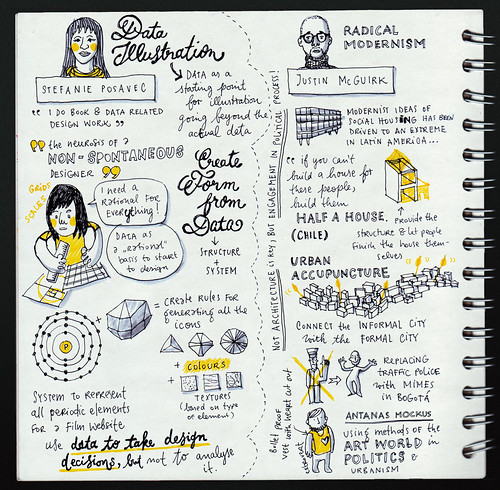Thirteen proved an unlucky number as I failed to do a Friday Reading post which must have been devastating for the 7 people that read it. My excuse was that I was at the bloody excellent conference The Story and then at the pub with a lot of excellent people who had been to The Story and some that had not. I will try and write some words about it (the conference not the pub visit) next week. As way of penance for forgetting last weeks I shall do a bumper edition this week for your reading pleasure. Enjoy it and your weekend you lovely people.
Connbox: prototyping a physical product for video presence with Google Creative Lab, 2011
“Although video phones have lived large in the public imagination, no company has made a hardware product stick in the way that audio devices have. There’s something weirdly broken about taking behaviours associated with a phone: synchronous talking, ringing or alerts when one person wants another’s attention, hanging up and picking up etc.”
Why A True 3D Desktop Would Be A Colossal Mistake
“Whether it be Windows 8 or something from Google, a true Minority Report future won’t be enabled until we can replace the keyboard with true speech recognition. This isn’t impossible, technically – but it may be so, culturally.”
The Overly Documented Life
“At night, I plug in my device and load the videos onto my computer. I try to watch a few snippets before bed, which can be a disconcerting experience. I’m learning things about myself I didn’t want to know. “
Seduced by ‘perfect’ pitch: how Auto-Tune conquered pop music
“People think they’ve heard the Auto-Tune, they’ve heard the dance hits, but you really have a great voice, too,” said Guthrie, helpfully.
“No, I got, like, bummed out when I heard that,” said Sebert, sadly. “Because I really can sing. It’s one of the few things I can do.”
Warrior starts with a shredding electrical static noise, then comes her voice, sounding like what the Guardian called “a robo squawk devoid of all emotion.”
Hail Corporate: The Increasingly Insufferable Fakery of Brands on Reddit
“Unfortunately, I don’t think that’s what’s happening here. These aren’t organic accidents or real fan-to-brand interaction. It’s just fakery–there’s too much of it for that not to be the case. And what’s worse, the brands that are engaging in the stunts could easily afford to pay for the ad space on those same pages. In other words, we’re not talking about small creative marketing here–we’re talking multibillion-dollar corporations using their enormous marketing teams to overwhelm busy volunteer moderators.”
How “Golden Eagle Snatches Kid” Ruled The Internet
“A second later, the eagle’s talons have latched on and the boy’s taken up off the ground; he’s dead weight. A guy in a black-and-white striped sweater rooting around in a bag nearby runs over as the boy takes flight. He’s in mid-air, and when the talons release, he’s flying for a split second before hitting the ground.”
Play by your own rules.
“At launch, both apps had their distinct moments of strength and weakness. We thought foursquare was crap, and believed the design nerds flocking to Gowalla validated our attitude. Gowalla also worked anywhere — We were the first to crowd-source a local database from scratch. foursquare only worked in a dozen cities. In short, all else equal, we believed people would use our service because of its superior craft and availability.”
Designing with context
“Context is a slippery topic that evades attempts to define it too tightly. Some definitions cover just the immediate surroundings of an interaction. But in the interwoven space-time of the web, context is no longer just about the here and now. Instead, context refers to the physical, digital, and social structures that surround the point of use.”
The 3 Pillars Of The Innovation Economy
“Research carried out by the Carnegie Institute of Technology shows that 85 percent of your financial success is due to skills in ‘human engineering,’ your personality and ability to communicate, negotiate, and lead. Shockingly, only 15 percent is due to technical knowledge.”
Twenty years ago (where the hell did those two decades go) Pulp Fiction was released. For a certain generation it was a defining film and for an ailing film industry it completely changed their world in so many ways. This great article covers how on earth it was made.
Cinema Tarantino: The Making of Pulp Fiction
“Keitel invited Willis to a barbecue at his home, saying that Tarantino would be there. The superstar arrived, and, one insider insists, he wanted the leading role, Vincent Vega. But with Travolta already cast as Vega, there was only one possible part for Willis—Butch, the boxer—which Tarantino had promised to Matt Dillon, whom he’d had in mind originally for the role.”
You can read the above links on your favourite device using this friendly service. You can also subscribe to these posts via email.




